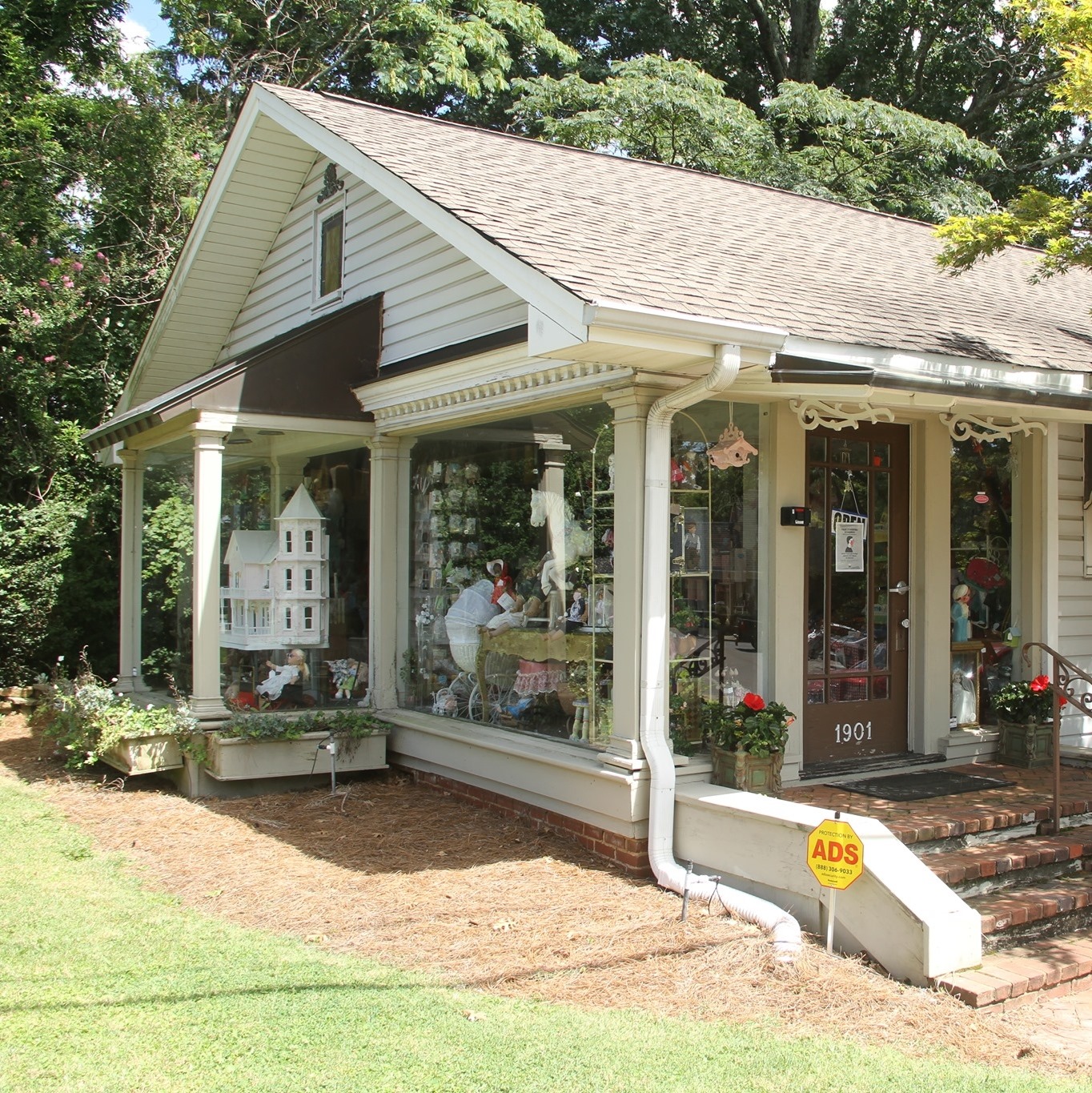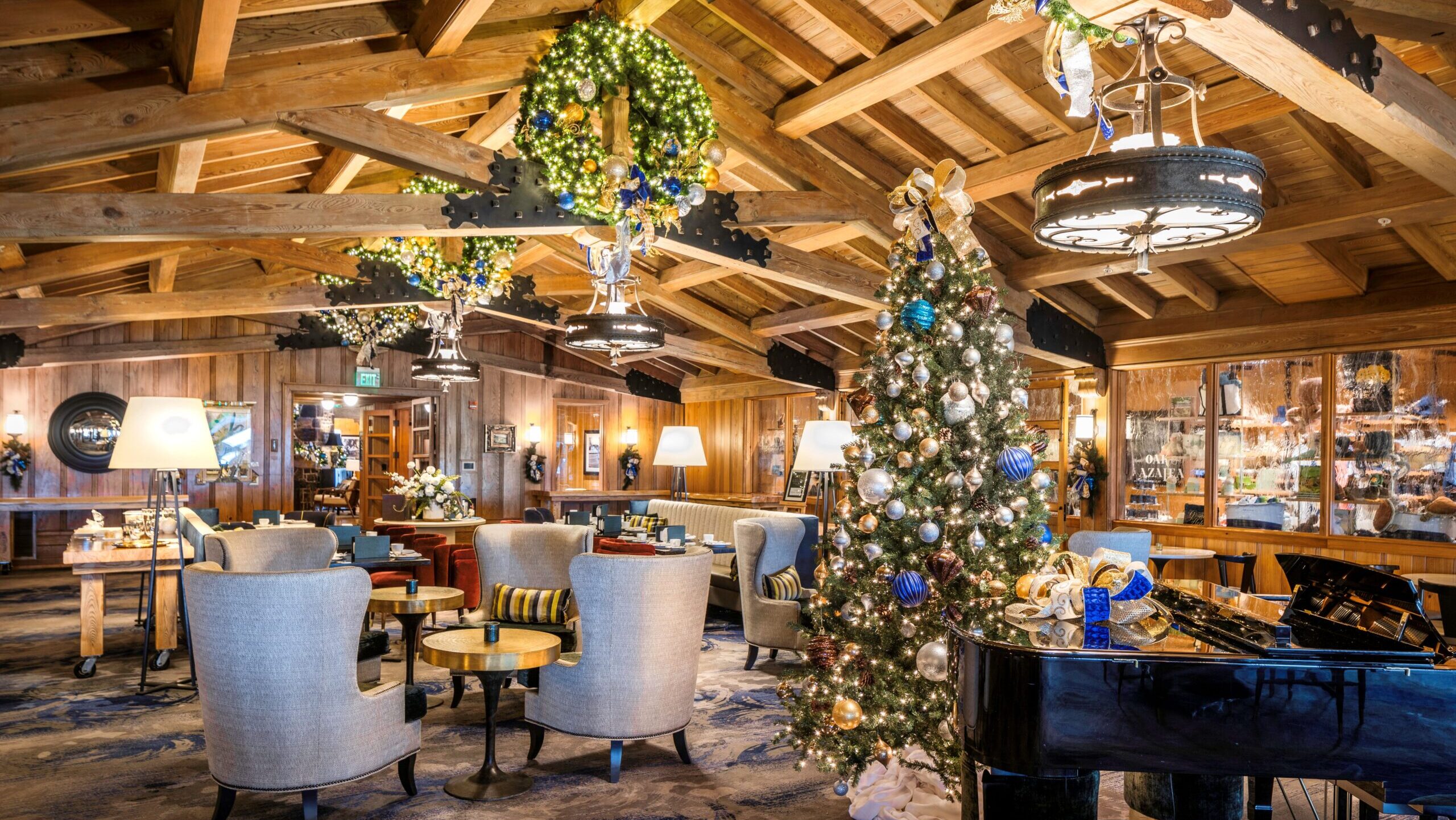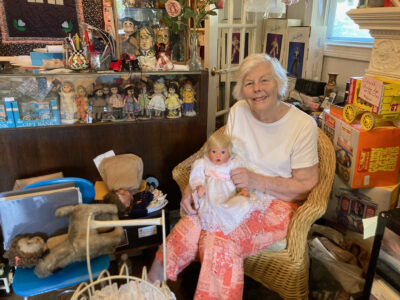
Mary Charles in the doll house (Verna Gates/Contributed)
It all started with a 1930s Shirley Temple doll for Mary Charles Robbins. Living in a home with no radio, before television, dolls provided her main entertainment.
“The composition dolls are the ones from my era. They have such good expressions on their faces. I would say they are my favorites since I played with them,” says Robbins, now 86 years-old.
Today, the Mary Charles Doll House is one of 10 repair shops world-wide that are approved by the Madame Alexander Doll Company. People seek out the tiny historic house in Homewood—formerly the location of Carriage House on Oxmoor Road—from all over the country. Part retail, part museum, the Mary Charles Doll House is crammed with antique and vintage dolls, teddy bears, doll clothes, doll houses and doll house furnishings. Very few things are new, except for the exquisite miniatures for tea sets and doll houses designed and painted by artists specializing in working small.
Mary Charles began her doll dream house forty years ago when she went into business with three other ladies. They opened an antique store, with no retail experience and even less funding.
“The rent was $50 a month, can you believe that!” says Robbins, Her original business stood across what is now CVS.
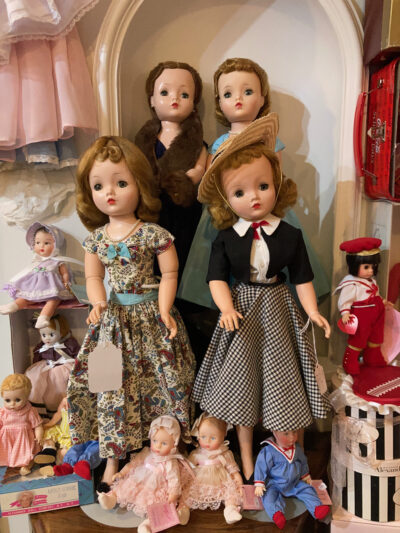
(Verna Gates/Contributed)
While customers bought furniture and lamps, quite a few asked, “Do you have any old dolls?” Encouraged by a friend who was a doll collector and who repaired dolls, she opened a shop that both sold and restored dolls. Her go-to restorer remains a star attraction.
“She is one-of-a-kind. It is amazing to see dolls shipped in from all over the country and leave revived. No one is as good as she is,” says Robbins.
Far from a toy store, the Doll House attracts adults, mostly women, who enjoy dolls and furnishing doll houses. Everywhere you look are dolls of all kinds. There’s Lucy stomping grapes and trying to keep up with chocolates on the conveyor belt in classic “I Love Lucy” shows. Raggedly Ann and Andy and Barbie and Ken remain together. Chatty Cathy no longer talks, but stands proud among the 150 brands of dolls found here. And Elvis has not left the building.
“A man who is an Elvis impersonator bought one of my Elvis dolls,” says Robbins.
An entire room is dedicated to Madame Alexander Dolls. For more than 100 years, these dolls have been cradled by little girls and passed down through families. Created in 1923 to replace the heartbreak so often met with porcelain dolls, Madame Alexander worked to maintain the quality of the glass art with sturdier materials. She believed that doll play taught children kindness and compassion. Robbins agrees and laments the lack of doll play today.
“Children learn about how to be a good mother and about life,” says Robbins.
Even fewer girls furnish doll houses, now almost exclusively an adult passion. One local lady lawyer purchases high-end doll house chandeliers and furniture at prices usually reserved for full size. Many of the furnishings are copies of museum pieces. In the back room, drawers of wall paper and racks of windows resemble a doll-sized home furnishings store. Purchases range from tiny tubs to thumb-nail-size porcelain cakes, sewing machines, stoves, beds, sofas and tiny wall paintings.
Seasonal offerings are Christmas decorations and pumpkins. One shopper wanted to create a Halloween doll house and bought ghosts, jack-o-lanterns and old trees.
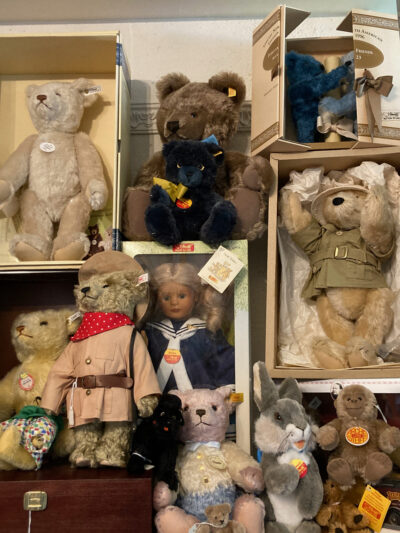
(Verna Gates/Contributed)
Handmade Steiff teddy bears range from cuddle-size to Beauty-and-the Beast collectibles. There are original Steiff circus train cars still carrying lions and tigers. They join Russian stacking dolls, lead soldiers from the 1920s, and vintage paper dolls in the front room of the store. A few items are there just because Mary Charles likes them, like music boxes and classic costume jewelry. Baskets with tea sets stand ready to serve anyone from an American girl doll to daddy. You can even find Beanie Babies. Some of the earliest dolls to celebrate the diversity of girls are found on the porch room.
While many of the dolls may be above the average price point, Robbins keeps a $5 basket in front of the door. She also contributes dolls to children who cannot afford them.
Everything in the store is for sale, except for Bandit, Robbin’s little dog. He lays faithfully next to her comfortable perch in front of the elegant fireplace in the historic home.
Even as many of her customers, the doll collectors, fade out, she holds hope that dolls will experience a renaissance. As she demonstrates a rare topsy-turvy doll—Cinderella at the ball on one side, with a flip of the dress she changes into rags—she comments on how things can change for the better. For her, the old dolls are friends for life, a wish she cherishes for every little girl.
